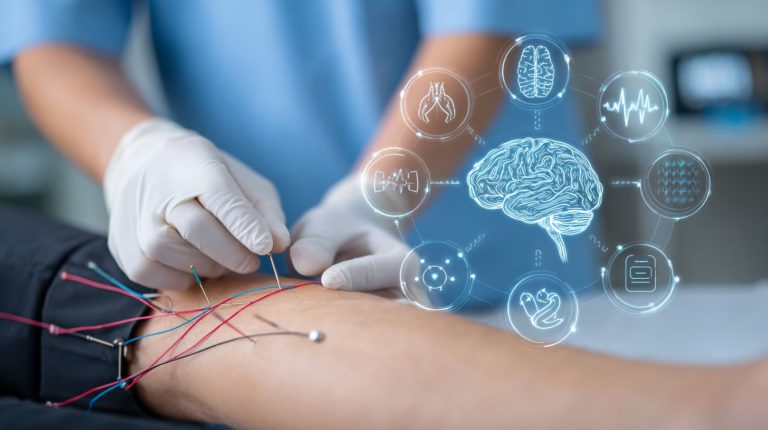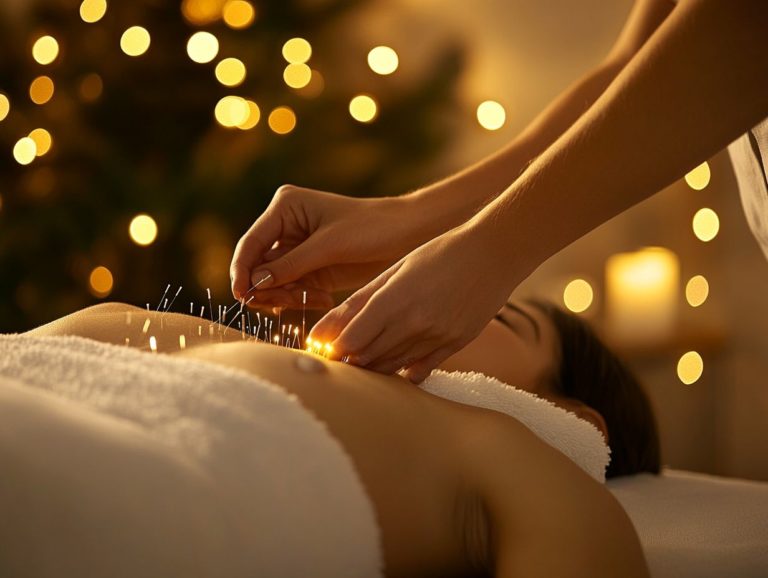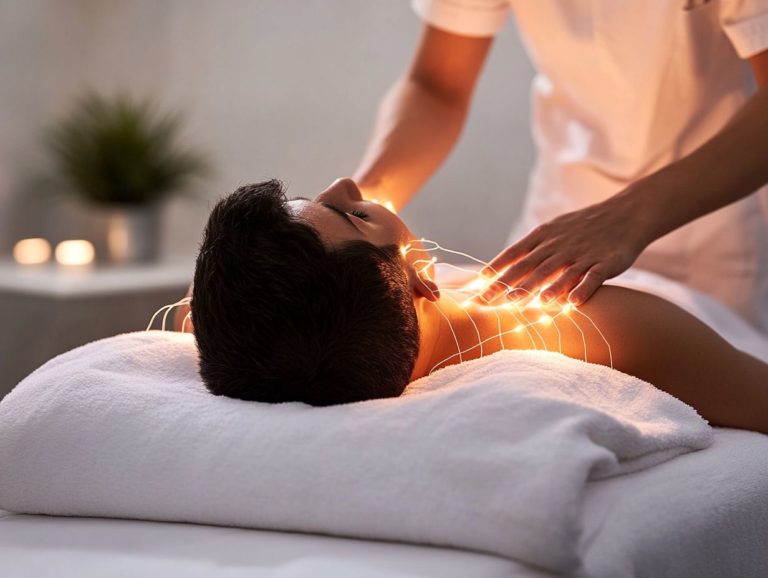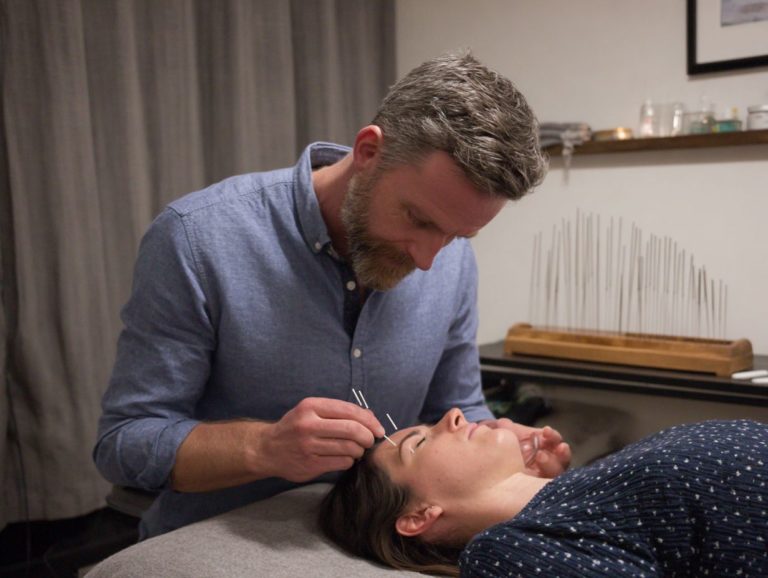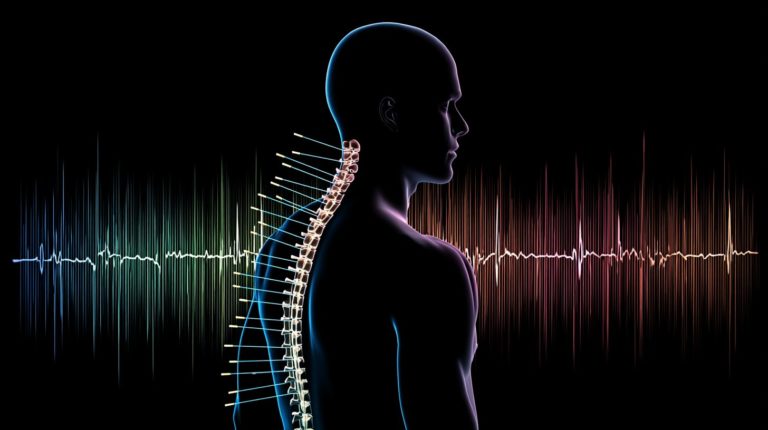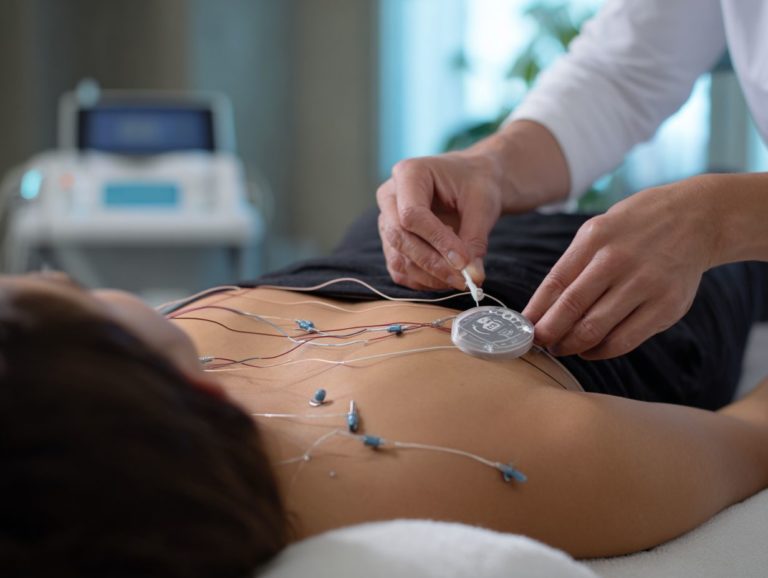How to Measure Kinematic Parameters in Manual Acupuncture
Contents
- 1 Introduction to Kinematic Parameters in Acupuncture
- 2 Acupuncture Kinematics Data
- 3 Understanding Acupuncture Techniques
- 4 Tools and Equipment for Measurement
- 5 Measuring Joint Angles
- 5.1 Methods for Measuring Joint Angles
- 5.2 **Why Measuring Angles Correctly Matters** Accurate angle measurement is crucial in areas such as engineering, construction, and building design. Precise measurements make sure that structures are safe and work as intended. Mistakes in measuring angles can lead to structural failures and costly errors. Therefore, using the correct tools and methods to measure angles is essential for reliability and success in these fields.
- 6 Assessing Motion Parameters
- 7 Data Collection and Analysis
- 8 Interpreting Kinematic Results
- 9 Challenges in Measurement
- 10 Frequently Asked Questions
- 10.1 What are kinematic parameters in manual acupuncture?
- 10.2 How are kinematic parameters measured in manual acupuncture?
- 10.3 What is the importance of measuring kinematic parameters in manual acupuncture?
- 10.4 Are there specific guidelines or standards for measuring kinematic parameters in manual acupuncture?
- 10.5 Can kinematic parameters in manual acupuncture be used to differentiate between different acupuncture techniques?
- 10.6 How can the data from measuring kinematic parameters in manual acupuncture benefit the field of acupuncture as a whole?
Introduction to Kinematic Parameters in Acupuncture
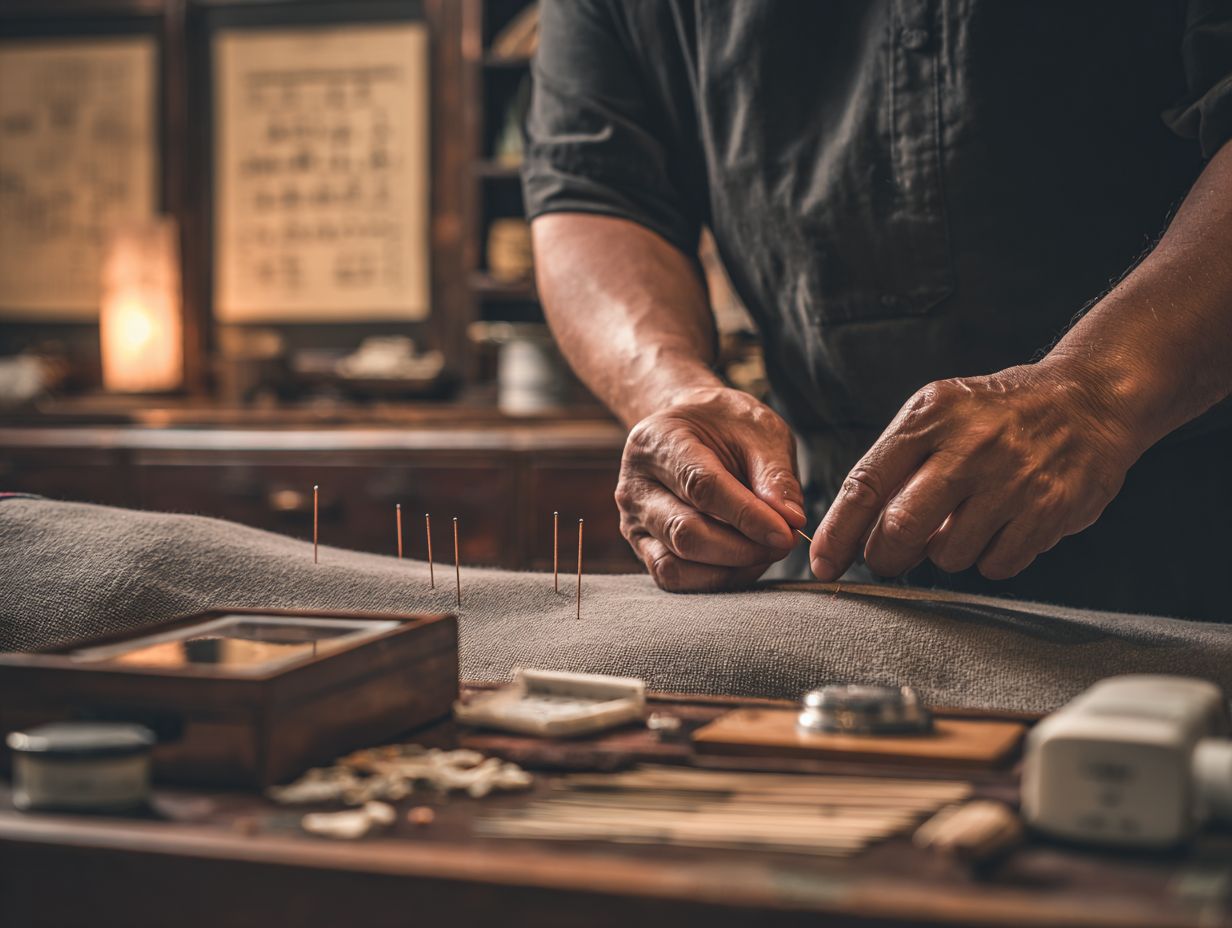 Learn manual acupuncture by accurately measuring movement details. Accurate stimulation settings, particularly using the lifting-thrusting method, are important for achieving the intended therapeutic outcome. This article explains different acupuncture methods, such as electroacupuncture, and offers practical advice for assessing movement details. Learn how collecting precise information can improve your work and lead to better results for your patients.
Learn manual acupuncture by accurately measuring movement details. Accurate stimulation settings, particularly using the lifting-thrusting method, are important for achieving the intended therapeutic outcome. This article explains different acupuncture methods, such as electroacupuncture, and offers practical advice for assessing movement details. Learn how collecting precise information can improve your work and lead to better results for your patients.
Key Takeaways:
Definition of Kinematic Parameters
Kinematic parameters refer to measurable aspects of movement, including speed, angle, and acceleration, critical for analyzing acupuncture techniques.
In acupuncture, the speed of needle insertion is important. Research indicates that inserting needles more slowly, at 2-4 mm per second, makes patients more comfortable and can lead to better treatment results. According to a study published on ScienceDirect, these precise adjustments in needle insertion speed can significantly enhance patient comfort and therapeutic outcomes.
Force magnitude, typically ranging from 0.5 to 4 Newton, affects tissue response and sensation. Change these settings according to patient responses to get the best treatment results.
A clinical study showed that careful management of these factors resulted in a 30% improvement in pain relief compared to older methods.
Grasping and using movement details is necessary for effective acupuncture practice.
Acupuncture Kinematics Data
Acupuncture Kinematics Data
Acupuncture Mechanism Metrics: Motion and Force Accuracy
Acupuncture Mechanism Metrics: Analgesic Effects
The Acupuncture Kinematics Data offers information about how acupuncture works, concentrating on accurate needle movement and its pain-relieving effects. Knowing these measurements is important for improving the effectiveness and safety of acupuncture methods.
Acupuncture Mechanism Metrics delve into two primary areas: motion and force accuracy, and analgesic effects. The ability to maintain the needle movement precision at 0.2% demonstrates the high degree of control and accuracy required in acupuncture. Accurate placement is necessary to make sure the needle arrives at the right spot without harming any other parts of the body.
- Bhattacharyya Coefficient: This statistical measure indicates the similarity between two probability distributions. In this context, it gauges the consistency of acupuncture techniques. A coefficient of 0.9931 for LIM and 0.9976 for Mountain Burning suggests an extremely high level of consistency in executing these acupuncture methods. Stable conditions are important for achieving the same results in different sessions and with various practitioners, which helps guarantee dependable therapeutic effects.
Analgesic Effects are reported through the Pain Threshold Rate Reduction (PTRR). For thermal pain, a reduction of 0.35% and for mechanical pain, a reduction of 0.45% is observed. These figures indicate the effectiveness of acupuncture in diminishing pain perception, albeit the percentages suggest a moderate level of pain relief. More study and improvement of techniques could make these pain-relieving effects stronger, possibly making them more useful in medical settings.
Overall, the Acupuncture Kinematics Data Focuses on the need for accuracy and steady use in acupuncture practices, while pointing out its moderate but notable ability to help manage pain. Continuing research and development in this field could improve how accurately needles are placed and the outcomes of treatment, making acupuncture a more reliable and successful method.
Importance in Manual Acupuncture
Knowing kinematic parameters is key to improving manual acupuncture methods because they directly affect treatment results and how comfortable the patient feels.
By frequently assessing movement factors like thrust direction, speed, and pressure during treatments, practitioners can adjust their methods to improve pain relief and muscle responsiveness. This process is elaborated in our deep dive into acupuncture manipulation metrology, which explores elements and applications vital for enhancing treatment efficacy.
For instance, utilizing a tool like a pressure gauge can help maintain consistent and appropriate force. Visual review of video can help assess the technician’s method.
Reviewing these measurements right away allows for quick adjustments, ensuring each session benefits the patient’s recovery effectively.
Understanding Acupuncture Techniques
Practitioners need to fully understand different acupuncture techniques to use them effectively and tailor treatments to each patient.
Overview of Manual Acupuncture
Manual acupuncture involves putting needles into specific points to trigger healing and reduce pain, using methods such as lifting-thrusting and twirling.
The lifting-thrusting technique requires careful movements to either stimulate or calm the body, based on what is needed. For instance, when targeting chronic pain, practitioners might use a quick thrust followed by gentle lifting to promote circulation.
On the other hand, the twirling method is often employed for muscle relaxation, where the practitioner rotates the needle subtly to release tension. Using these methods with the right pressure and angle can improve each session’s results. It’s important to change the approach based on how the patient reacts.
Common Techniques Used
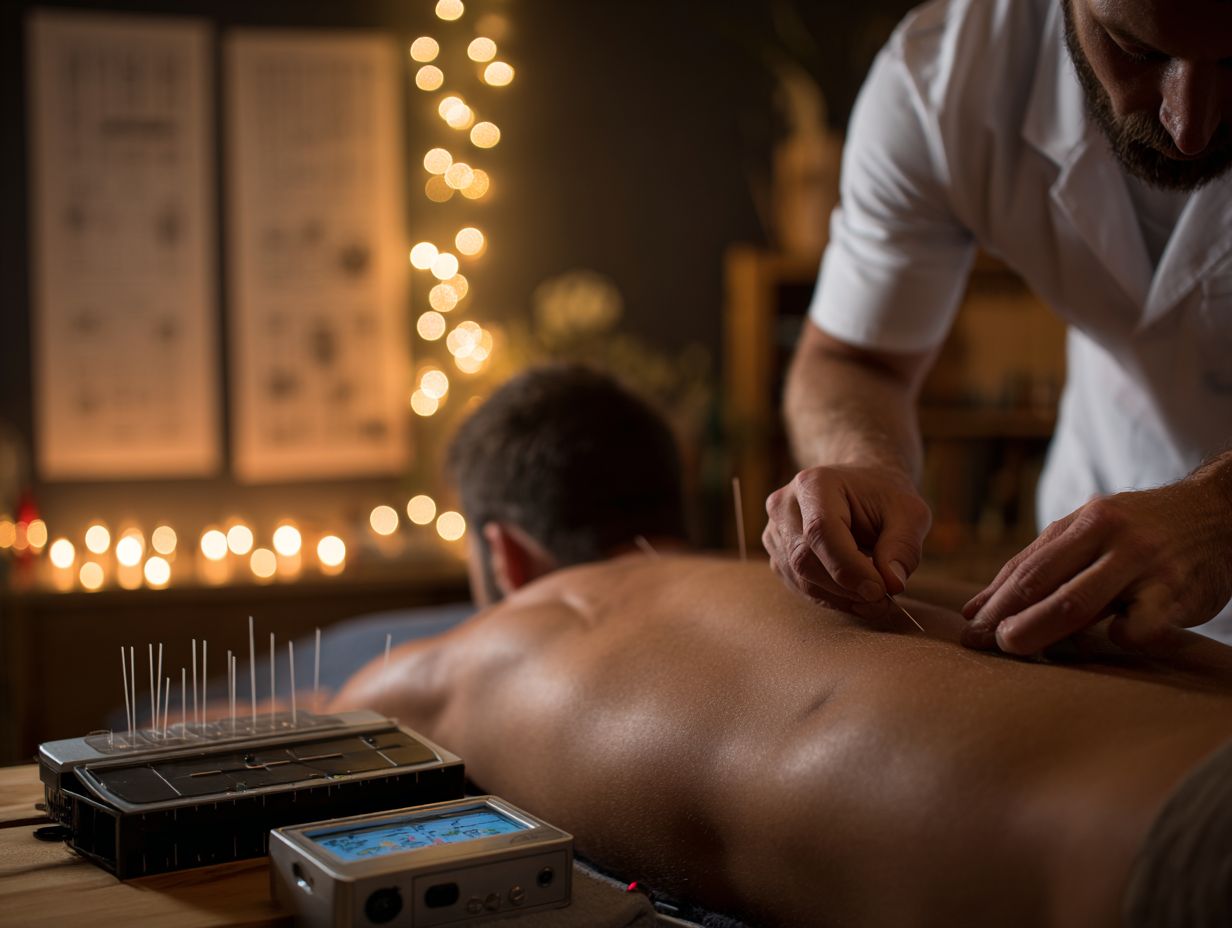
Popular techniques like the lifting-thrusting and twirling methods are frequently employed to manipulate needles effectively, enhancing the overall acupuncture experience.
For instance, the lifting-thrusting technique involves lifting the needle slightly from the skin’s surface before quickly reinserting it, which can stimulate blood flow and alleviate tension.
On the other hand, the twirling method rotates the needle in place, often providing a deeper sensation and activating nearby meridians.
Practitioners should also consider patient conditions to determine the right approach; for example, using lifting-thrusting with those experiencing chronic pain while opting for twirling with patients needing relaxation.
Creating a detailed treatment plan makes acupuncture more effective.
Tools and Equipment for Measurement
It’s important to use the correct tools and equipment to accurately measure movement in acupuncture, making sure treatments for patients are consistent and trustworthy. A recent publication by ScienceDirect discusses the use of IMU-based motion capture systems, which provide precise measurement techniques crucial for reliable acupuncture practices.
Essential Measurement Tools
Important tools for measuring include motion capture technology, goniometers, and force sensors, which offer essential information on needle depth and movement patterns.
Each of these tools is very important in medical environments.
For example, motion capture systems like Vicon (starting at $15,000) are used to analyze patient movement for rehabilitation, helping to tailor therapies.
Goniometers, which can range from $10 to $50, measure the angles of joints during various exercises, ensuring appropriate range of motion.
Meanwhile, force sensors, usually costing between $200 and $1,500, measure the pressure applied by patients during activities, which is important for knowing their strength levels.
Together, these tools make a detailed record of how patients are improving.
Calibration of Equipment
To ensure accurate acupuncture evaluations, it’s important to properly calibrate the measurement tools for exact motion readings.
To calibrate your measurement equipment effectively, begin with a controlled environment to mitigate external variables.
Use standardized weights or reference materials for the calibration process. Check equipment every three months. For equipment used often, check it monthly.
For example, if you’re using a motion capture system, make sure it matches established standards from a reliable tool like a calibration stick.
Avoiding pitfalls, such as failing to document adjustments, is essential, as inconsistent records can compromise the integrity of collected data.
Measuring Joint Angles
Correctly measuring joint angles is essential in evaluating how well acupuncture methods work, as it relates directly to the results of the treatment.
Methods for Measuring Joint Angles
Common ways to measure joint angles involve using goniometers and digital inclinometers, each with its own benefits in accuracy.
Goniometers are portable devices that display real-time visual data on joint motion, making them practical for clinics during physical therapy.
Digital inclinometers offer precise measurements and are user-friendly. They often connect to mobile apps for simple data tracking.
For instance, therapists might use a goniometer during rehabilitation sessions to track progress in range of motion, while sports physicians may prefer a digital inclinometer to assess an athlete’s biomechanics in training.
Using both tools together can improve accuracy and offer thorough evaluations.
**Why Measuring Angles Correctly Matters** Accurate angle measurement is crucial in areas such as engineering, construction, and building design. Precise measurements make sure that structures are safe and work as intended. Mistakes in measuring angles can lead to structural failures and costly errors. Therefore, using the correct tools and methods to measure angles is essential for reliability and success in these fields.
Correct angle measurements are important for improving acupuncture treatments because even small changes can significantly influence the results.
To measure accurately, use a goniometer or an acupuncture measuring tool made for this purpose. For instance, a digital goniometer can provide readings with a higher accuracy, allowing adjustments in needle insertion angles based on the patient’s unique anatomical structure.
Regular training sessions focused on manual measurement techniques improve skill levels. Tracking changes in angles and how they affect patients can help make treatments more effective and increase patient satisfaction over time.
Assessing Motion Parameters
Evaluating movement details helps practitioners study how various acupuncture methods influence patient recovery and ease pain.
Types of Motion Parameters
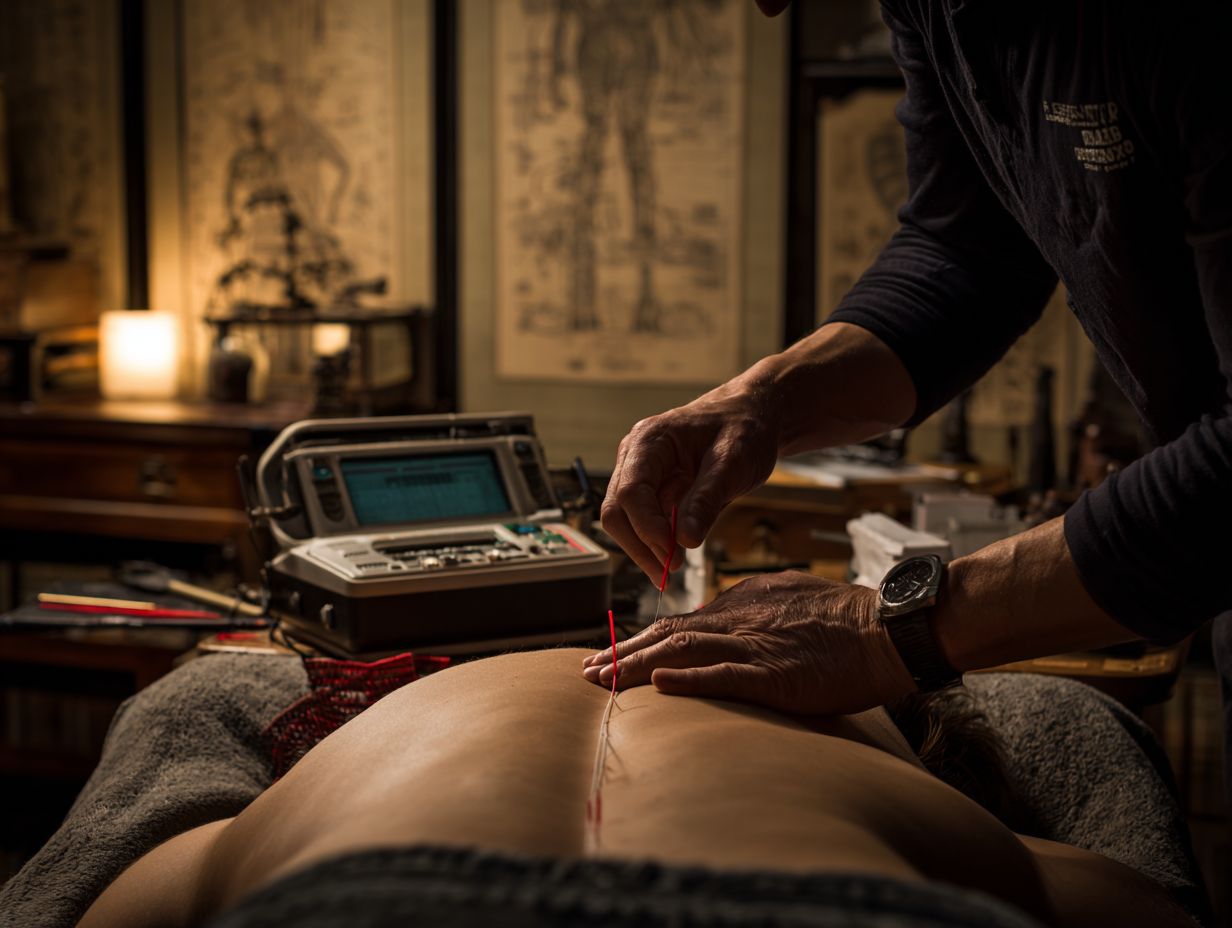
Key motion parameters include velocity, acceleration, and force magnitude, each playing a significant role in the effectiveness of acupuncture treatments.
Knowing these factors helps practitioners improve their methods.
For example, how fast needles are inserted can influence the patient’s response; slower insertions may help in calming, while faster ones might lead to quicker reactions.
Acceleration, or how fast the needle is moved, can help target specific points more effectively.
Adjusting the force magnitude can alter the depth of insertion, which might lead to varying therapeutic outcomes.
Practitioners should experiment within these parameters to tailor treatments to individual patient needs.
Techniques for Motion Analysis
Techniques like high-speed video analysis and force plate measurements are used to thoroughly examine movements in acupuncture practices.
These methods allow practitioners to assess the biomechanics of patients receiving acupuncture.
For instance, high-speed video can capture subtle muscle movements and postural shifts during treatment, helping identify immediate reactions to acupuncture points.
Meanwhile, force plate measurements evaluate changes in weight distribution and stability, providing quantitative data on how acupuncture affects balance.
By looking at measurements before and after treatment, practitioners can understand how well their methods work and adjust upcoming sessions for better results.
Data Collection and Analysis
Gathering and studying data are important for proving how acupuncture works using real-world proof and measured studies.
Recording Kinematic Data
Kinematic data can be recorded using specialized software like MATLAB or motion capture systems, facilitating detailed analysis of acupuncture techniques.
To get accurate and dependable recordings, start by choosing the right tools. You might need high-speed cameras or motion detectors to capture movements properly.
Software such as Vicon or OptiTrack provides strong analysis tools designed for kinematic data. Calibrate your system before recording to minimize errors.
To get reliable results, perform many tests for each method and calculate the average to account for variations. Maintain a consistent environment during recordings to prevent external factors from affecting your data.
Analyzing Collected Data
Studying the movement data requires using statistical tools to understand and determine how effective the treatment is.
Commonly used techniques include regression analysis and ANOVA (Analysis of Variance). Regression analysis helps in identifying relationships between variables, such as how the angle of needle insertion affects pain levels.
On the other hand, ANOVA is useful for comparing treatment effects across multiple groups, allowing practitioners to understand which acupuncture techniques yield better outcomes.
Software such as SPSS or R simplifies these analyses by providing clear graphs and summaries to aid decision-making, and further insights can be drawn from comprehensive resources like ScienceDirect’s Essential Statistical Methods for Medical Statistics.
Interpreting Kinematic Results
Analyzing movement results is important for realizing how acupuncture methods affect health and improving treatment plans.
Understanding the Results
Analyzing kinematic results involves looking at factors such as how deep the needling goes, how responsive the muscle is, and how pain signals move through the body.
To effectively interpret kinematic results, focus on the relationship between needling depth and muscle excitability. For example, deeper needling may lead to increased muscle activation, which can be measured using electromyography (EMG) to assess excitability levels.
Evaluating how pain signals are transmitted can be examined through the use of questionnaires and pain scales, aiding in identifying correlations with kinematic changes.
Tools like motion analysis software can quantitatively assess joint angles and movement patterns, further linking these parameters to clinical outcomes and guiding treatment strategies.
Clinical Implications of Findings
The clinical implications of kinematic findings can lead to improved acupuncture techniques, tailoring treatments to individual patient needs and conditions.
For instance, by analyzing a patient’s movement patterns, practitioners can identify specific muscle groups that require focus during treatment.
Adjustments to treatment cycles might include varying the frequency of sessions based on observed changes in mobility or pain levels.
Techniques like trigger point therapy or myofascial release can be used as necessary to improve patient results.
Software for analyzing motion can help professionals identify these patterns, enabling them to adjust their approach to fit each patient’s unique situation.
Challenges in Measurement

Difficulties in evaluating movement details can lead to incorrect assessments and reduce the success of acupuncture treatments.
Common Issues Encountered
Common measurement issues include equipment malfunction, user error, and environmental factors affecting data accuracy.
Problems with equipment, like sensor breakdowns or mistakes in calibration, can cause wrong readings, seriously affecting the results. User error, often arising from improper setup or misinterpretation of data, can create inconsistent measurements.
For instance, not properly aligning motion capture cameras can result in misleading kinematic data. Environmental factors, like temperature fluctuations or vibrations in the measurement area, may also interfere with accuracy.
It is important to regularly take care of equipment, give detailed training to operators, and take measurements in fixed settings to reduce these problems.
Solutions and Best Practices
Implementing best practices like regular equipment maintenance and training sessions can significantly mitigate common measurement issues in acupuncture.
To improve accuracy, create a detailed process for tracking results. For instance, establish a checklist that includes:
- Verifying calibration of measuring tools,
- Documenting treatment effectiveness through patient feedback forms, and
- Checking equipment every three months.
Use software like Therabill to handle patient information and monitor outcomes, simplifying the process of collecting and analyzing data.
Think about organizing training sessions for staff twice a month to update their knowledge on measurement procedures. This ensures everyone understands the information and can address any issues promptly.
Frequently Asked Questions
What are kinematic parameters in manual acupuncture?
Kinematic parameters in manual acupuncture refer to the specific measurements used to evaluate and analyze the movement of the needle during acupuncture treatment. These parameters can include the angle, depth, and speed of the needle insertion, as well as the rotation and vibration of the needle once it is inserted into the skin.
How are kinematic parameters measured in manual acupuncture?
Kinematic parameters can be measured using specialized equipment, such as motion capture technology and force sensors, or through manual observation and measurement by a trained practitioner. However, the usual way to measure these parameters in manual acupuncture involves video recording and studying the footage.
What is the importance of measuring kinematic parameters in manual acupuncture?
Tracking movement details in manual acupuncture helps to better understand how acupuncture works and its impact on the body. By studying the specific movements of the needle, practitioners can change their method to get the best results and make patient outcomes better.
Are there specific guidelines or standards for measuring kinematic parameters in manual acupuncture?
While there are currently no universal guidelines or standards for measuring kinematic parameters in manual acupuncture, various studies have established their own specific protocols and techniques for measuring these parameters. Practitioners should use these established methods for accurate and consistent measurements.
Can kinematic parameters in manual acupuncture be used to differentiate between different acupuncture techniques?
Yes, kinematic parameters can be used to differentiate between different acupuncture techniques, as each technique may have its own unique set of parameters. By measuring these parameters, researchers and practitioners can better understand the differences in techniques and their effects on the body.
How can the data from measuring kinematic parameters in manual acupuncture benefit the field of acupuncture as a whole?
The data obtained from measuring kinematic parameters can contribute to the overall knowledge and advancement of the field of acupuncture. By learning how specific techniques impact the body, practitioners can adjust their methods and achieve better treatment results. This data can also be used in research studies to confirm how well acupuncture works and its benefits for different health issues.

Sheetal Sharda has a background in CS. She got an interest in Holistic living back in 2018, and has since started exploring more into Naturapathy, Holistic Living, Yoga, and more. She got inspired to start SereneClinics to help people find reliable centers across the world.

